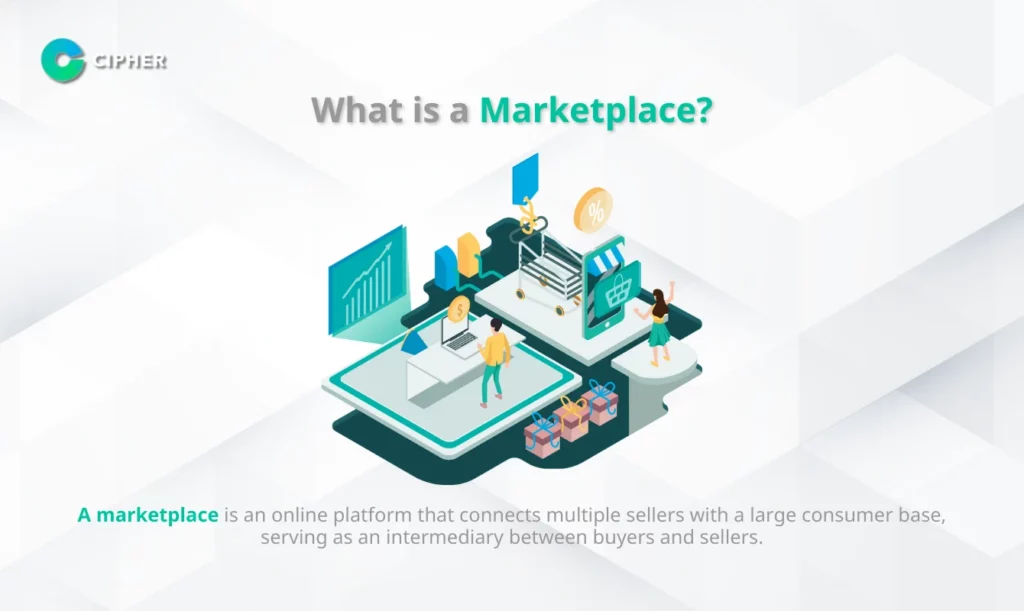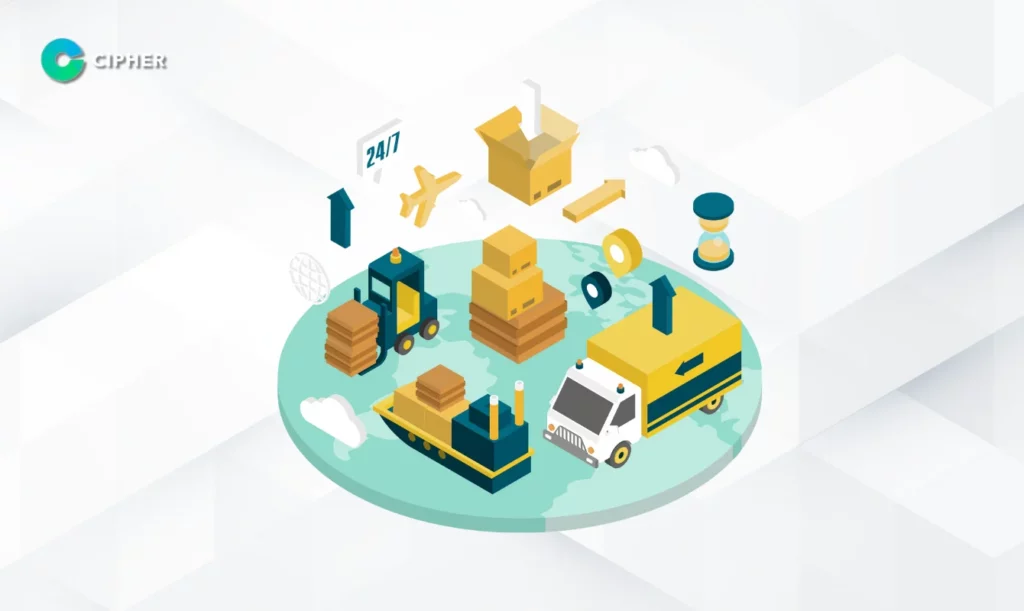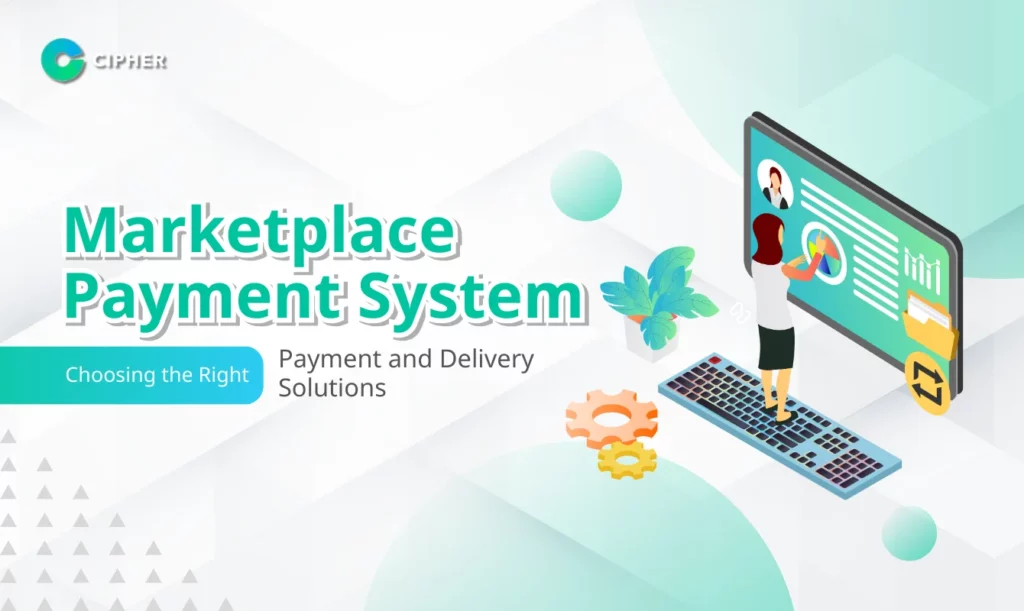Table of Contents
By 2027, third-party sellers on marketplaces are expected to account for 59% of global e-commerce sales, up from 56% in 2022. One of the key factors affecting marketplace success is the marketplace payment system and delivery. How marketplaces manage transactions and logistics directly impacts overall growth, from user experience to revenue generation capabilities.
This article will explain the importance of marketplace payment systems and delivery systems, considerations for choosing appropriate service providers, and best practices to support future growth for those planning to create an e-commerce marketplace.
What is a Marketplace?

A marketplace is an online platform that connects multiple sellers with a large consumer base, serving as an intermediary between buyers and sellers. It’s similar to a large virtual department store that brings together products from various sellers in one place. Well-known examples of marketplaces include Amazon, eBay, Lazada, Shopee, and Airbnb.
Marketplaces differ from typical online stores in that marketplace owners don’t own the products sold on the platform. They only provide technological infrastructure, attract visitors, and manage the marketplace payment system, while sellers manage their own inventory, logistics, and shipping.
What Types of Marketplaces Are There?
Currently in Thailand, popular marketplaces can be divided into two main types:
- E-Marketplace – Platforms that serve as intermediaries for buying and selling products through websites or applications, such as Shopee and Lazada, with comprehensive store management, product management, and marketplace payment systems.
- Social Commerce – Trading through social media like Facebook Marketplace, Instagram Shop, and TikTok Shop, which integrate product sales with social platforms that already have established users.
Additionally, there are Service Marketplaces that focus on services rather than products, such as Fiverr, Upwork, or Fastwork, which connect service providers with clients seeking to hire them.
Why Are Payment and Delivery Systems Important for Marketplaces?
Choosing infrastructure for marketplace payment systems and delivery directly impacts marketplace success. Efficient systems are not just mechanisms for exchanging money and delivering products, but strategic assets that enhance user satisfaction, facilitate growth, and build trust.
Here are key aspects where marketplace payment systems and delivery impact marketplaces:
- User Experience – Simple and fast payment and delivery processes can improve overall user experience, affecting customer satisfaction, retention, and repeat purchase opportunities.
- Trust and Security – Choosing reliable marketplace payment processors and trustworthy delivery systems helps create a secure environment for users.
- Global Reach – Marketplaces targeting international trade should choose payment processors and delivery systems that support multiple currencies and international shipping services.
- Scalability – As your e-commerce marketplace grows, payment and delivery systems should be able to handle increased transaction and shipping volumes without affecting performance.
- Regulatory Compliance – Compliance with regional and international regulations when handling financial transactions and personal data is essential.
- Revenue Generation – Marketplaces often rely on commission-based revenue models, so it’s important to choose a marketplace payment system that supports such models.
- Dispute Resolution – Payment and delivery systems should have efficient mechanisms for handling chargebacks and refunds.
- Seller Payouts – Convenient, fast, and flexible payout systems make marketplaces more attractive to sellers.
Efficient marketplace payment system and delivery infrastructure connects marketplaces with buyers and sellers to create a cohesive digital ecosystem. Well-integrated solutions can transform a good marketplace into an excellent one.
Choosing a Payment Provider for Marketplaces
Selecting a marketplace payment system provider is a crucial decision that will affect user experience, operational efficiency, and overall success. Here are key factors to consider when choosing a payment provider:
1. Costs
Comparing these costs between providers will help you make an informed decision. For example, Stripe offers a pay-as-you-go service model, charging fees per successful transaction without setup or monthly fees, and provides volume discounts for businesses with high payment volumes.
2. Global Functionality
If your marketplace serves international audiences or has expansion plans requiring cross-border payments, your marketplace payment system provider should support multiple currencies and be available in multiple countries.
Supporting local payment methods in different regions will increase conversion rates and improve user experience. For example, Stripe supports payment processing in over 135 currencies and operates in 46 countries, making it suitable for global marketplaces.
3. Integration Convenience
The provider’s system should integrate seamlessly with your marketplace platform. Some providers offer flexible APIs that make integration easier. Reducing the time and resources spent on integration will allow you to focus more on other aspects of your business.
Stripe provides powerful APIs and SDKs that make it easy to integrate the platform with a marketplace payment system, regardless of your technology stack, ideal for those looking to create an e-commerce marketplace.
4. Payout Flexibility
The marketplace payment system provider should handle the payout process efficiently, including offering flexible payout schedules, the ability to pay out to bank accounts in different countries, and options to split payments between you and sellers.
Stripe Connect is designed specifically for marketplaces, offering payout flexibility and supporting instant payouts, scheduled payouts, and the ability to send money to sellers in over 25 countries in local currency.
5. Security
Given the sensitivity of payment data, your provider must have effective security measures, including data encryption, fraud detection systems, and compliance with Payment Card Industry Data Security Standards (PCI DSS).
Stripe prioritizes security, using machine learning algorithms for fraud detection and data encryption. Additionally, Stripe complies with the highest level of PCI DSS to ensure payment data is handled in the most secure environment.
6. Regulatory Compliance
Payment transactions must comply with various legal requirements and regulations. A suitable provider will help you navigate these complexities and ensure you comply with relevant laws and regulations.
Stripe helps handle complex compliance issues such as Know Your Customer (KYC) requirements, allowing you to onboard sellers in compliance with requirements.
7. Payment Dispute Management
Sometimes, buyers may dispute charges or request chargebacks. Your provider should have systems to efficiently handle these situations, helping you maintain good relationships with buyers and sellers.
Stripe has tools to help manage payment disputes and chargebacks, allowing you to submit evidence through the Stripe dashboard, and Stripe’s algorithms will suggest ways to prevent future payment disputes.
8. Customer Support
If errors occur, you need to be able to contact the provider quickly and easily. Stripe offers various support options, including 24/7 email, chat, and phone support, in addition to an extensive content library covering product functionality and troubleshooting.
9. Scalability
As your e-commerce marketplace grows, your marketplace payment system provider should expand services along with your business, whether handling more transactions, supporting more sellers, or expanding into new regions.
Stripe is built to support business expansion and handle high-value transactions as your marketplace grows.
10. Stability
Your provider should have a stable track record and performance. Downtime can lead to lost sales and poor user experiences. Choose a provider with high reliability and a history of stable service.
After considering these factors, you should have a list of providers that meet your requirements. Contact these providers for more information, request demonstrations, or even try pilot versions to test the systems. This is an important step because finding the right marketplace payment system provider will make a significant difference to the success of your marketplace.
Suitable Delivery Systems for Marketplaces
Besides the marketplace payment system, delivery systems are also crucial for marketplace success. Choosing an efficient delivery system will directly impact customer satisfaction and platform competitiveness. Here are factors to consider when selecting a delivery system for marketplaces:

1. Coverage and Flexibility
A good delivery system should cover a wide area and be flexible in delivering various types of products. Especially for marketplaces with diverse product types, from small items to large ones, having multiple carrier options will help sellers choose services appropriate for their products.
2. Shipping Costs
Shipping costs are a key factor affecting the final price of products. Marketplaces that can negotiate special rates with carriers will help sellers gain a competitive price advantage. Additionally, having an accurate and transparent shipping cost calculation system builds trust with both buyers and sellers.
3. Speed and Punctuality
In an era where customers expect fast delivery, efficient and punctual delivery systems are essential. Marketplaces should offer various shipping options, from standard delivery to express or same-day delivery, to meet different customer needs, especially when creating an e-commerce site with multiple sellers and product types.
4. Tracking and Status Reporting
Real-time and accurate delivery status tracking systems help reduce customer anxiety and the number of inquiries about shipping status. Marketplaces should have systems that allow both buyers and sellers to track package status throughout the delivery route.
5. International Shipping Support
For marketplaces looking to expand into international markets, having delivery systems that support international transport and can efficiently manage customs documentation is essential. A good system should be able to handle the complexities of international shipping, such as import taxes, product certifications, and varying import regulations in different countries.
6. Return and Exchange Policies
A good delivery system not only delivers products to customers but also supports convenient returns and exchanges. Marketplaces should have clear policies and processes for handling returned products, including convenient methods for customers to return items.
7. Inventory Management Systems
For large marketplaces, having inventory management systems that integrate with delivery systems will increase efficiency and reduce errors. These systems should be able to track inventory, alert when stock is running low, and efficiently manage product shipping.
8. Customer Service
When shipping problems occur, such as lost or delayed packages, marketplaces should have a customer service team that can respond and resolve issues quickly. Having clear processes for handling complaints and compensation will help maintain customer trust.
9. Environmental Friendliness
In an era where consumers increasingly value sustainability, having environmentally friendly shipping options, such as using eco-friendly packaging or carbon offsetting, will enhance the marketplace’s image.
Choosing the right delivery system will help marketplaces support growth and effectively meet the needs of both buyers and sellers. Delivery systems should be regularly evaluated and improved to ensure they continue to meet user needs and support business growth.
Get a Marketplace Website Built Through E-commerce Website by Cipher
Cipher offers comprehensive Marketplace website creation services on E-commerce websites, designed to meet the needs of modern online businesses looking to create platforms connecting buyers with multiple sellers in one place. We focus on developing systems that are stable, secure, easy to use, and scalable according to business growth.
Our Services
Comprehensive Marketplace System Development
- Develop Marketplace websites with modern technology
- Design user interfaces (UI/UX) that are easy to use for both buyers and sellers
- Create comprehensive back-end management systems for administrators and sellers
- Support display on all device types (Responsive Design)
Why Choose Cipher?
- Experience – An experienced team in developing E-commerce and Marketplace systems in which we specialize
- Modern Technology – Using the latest technology to create systems that are fast, secure, and easy to use
- Customization – Design and develop systems according to your specific business needs
- After-Sales Support – Continuous system maintenance and support services after delivery
- Sustainable Growth – Design systems ready to grow with your business
Cipher’s Marketplace website creation services focus on building high-efficiency marketplace payment systems and delivery systems to give your business a competitive advantage and prepare it for future growth.
Summary
Selecting the right marketplace payment system and delivery system is a key factor in driving Marketplace success in the digital age. Whether you’re creating an e-commerce marketplace or using Marketplace website creation services, these systems must be secure, flexible, and able to support good growth.
Successful marketplaces in the future will need to combine comprehensive marketplace payment systems, efficient delivery systems, and excellent customer service. Service Marketplaces that continuously develop will have high growth opportunities in the next 5-10 years.
Finally, whether you choose to develop systems yourself or use Marketplace website creation services from experts, prioritizing efficient marketplace payment systems and delivery systems will be the key to long-term success.
Frequently Asked Questions (FAQ)
How is a Marketplace Payment System Different from a Regular Payment System?
Marketplace payment systems are more complex because they need to support splitting funds between the platform and multiple sellers. They need flexible payout systems, seller verification (KYC), and comprehensive dispute management systems. They also need temporary fund hold mechanisms (Escrow) to protect both buyers and sellers.
Should I Develop My Own Delivery System or Use External Services for My Marketplace?
The choice depends on the size and resources of your business. For starting Marketplaces, using external services will save costs and development time, while large Marketplaces may develop their own systems for maximum flexibility, or use a mixed approach by developing core systems themselves and integrating with various external delivery services.
What is the Most Important Consideration When Designing Payment and Delivery Systems for a Marketplace?
Security and data protection must come first, especially for customer financial and personal data. Additionally, systems must be designed to support expansion without affecting performance when the number of users and transactions increases, and must prioritize a simple, convenient user experience, even though the system may be complex behind the scenes.





